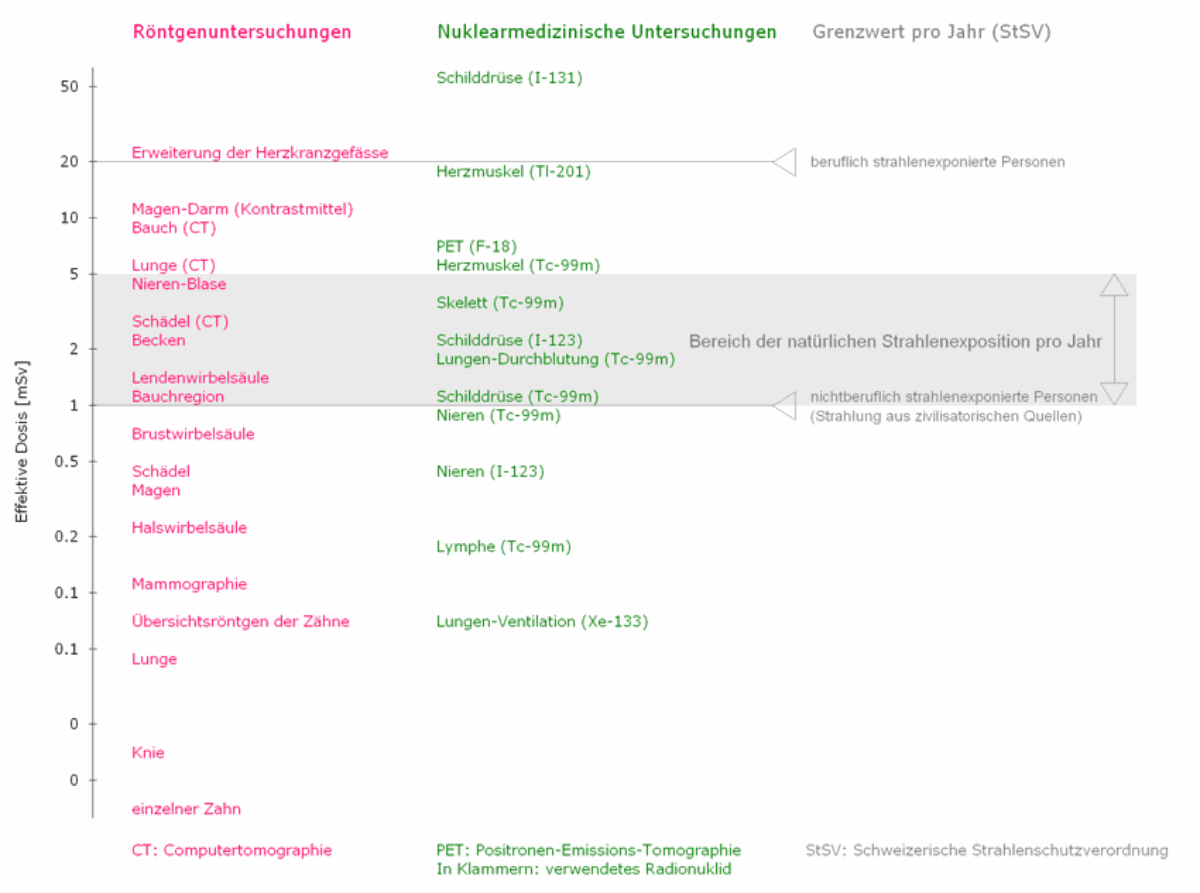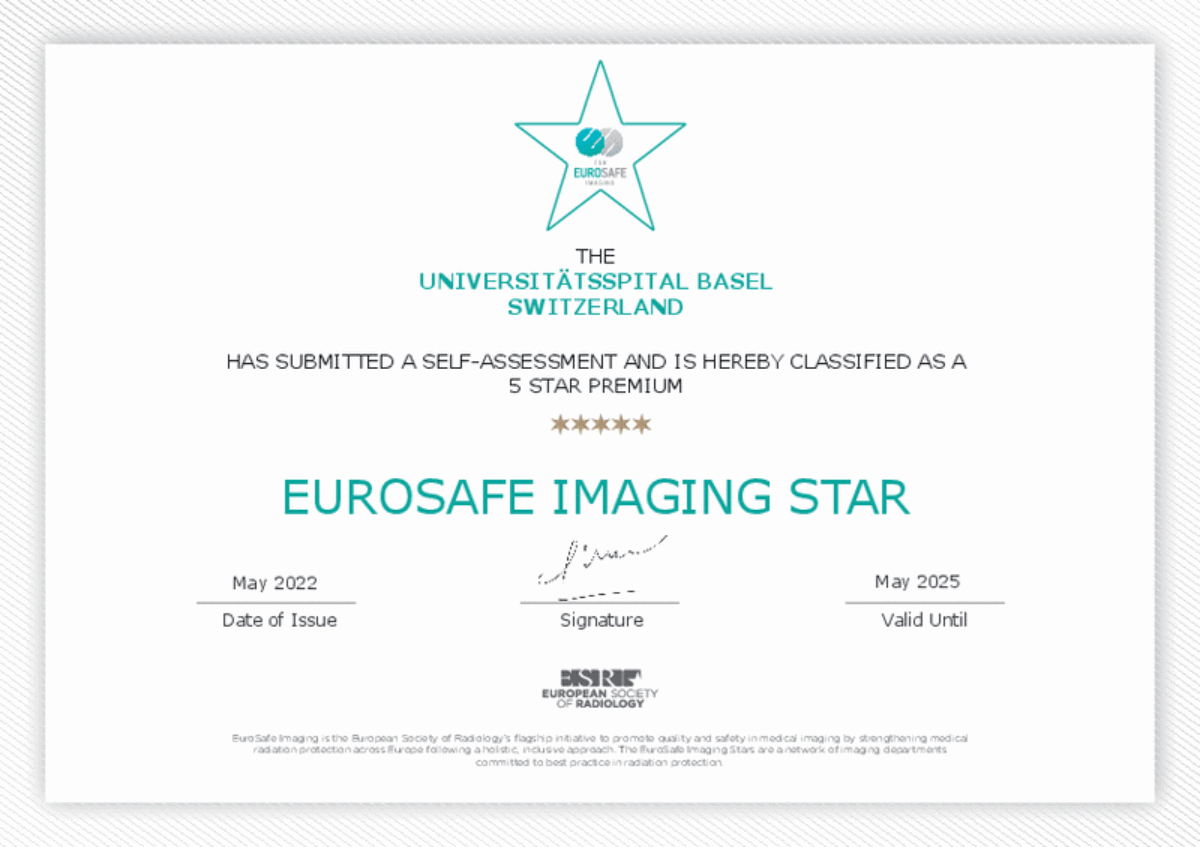We attach particular importance to efficient and consistent radiation protection in order to minimize the exposure of our patients and employees to radiation. Responsibility for radiation protection lies primarily in the hands of the Radiological Physics and Radiopharmaceutical Chemistry departments. All departments that work with radiation are actively involved in the implementation of radiation protection.
The tasks of Radiological Physics include the radiation dose monitoring of approx. 700 occupationally exposed persons at the University Hospital Basel, the coordination of quality assurance at the X-ray equipment throughout the hospital, the licensing of the operation of this equipment, dose estimates for X-ray examinations and advice on various radiation protection issues within and outside the hospital.
Radiopharmaceutical Chemistry is responsible for the safe handling of open radiation sources during nuclear medicine examinations and therapies and - in collaboration with the Department of Nuclear Medicine - for the inspection and disposal of radioactive waste.
Dispensing with shielding protective agents during radiological examinations
In the past, lead aprons or other protective agents were used in some radiological examinations to shield organs sensitive to radiation.
Thanks to technical progress, lower radiation doses are now sufficient to obtain good imaging and it is possible to better protect radiation-sensitive organs. This reduces the overall radiation exposure, especially in the direct examination area, and also scatters less radiation into the surrounding organs and body regions.
Due to these developments, we do not use X-ray aprons and other protective devices such as testicular capsules, lens protection or thyroid protection at the University Hospital Basel.
By dispensing with these protective devices, there is also no risk of them unintentionally entering the examination area, which could result in disadvantages such as poorer image quality or a negative impact on radiation exposure.
These statements are based on the latest scientific publications, the recommendations of the Swiss Society for Radiobiology and Medical Physics and the Swiss Federal Commission for Radiological Protection
However, if you feel unsafe or would like additional protection, we will continue to provide you with protective equipment on request.
Please contact us if you have any questions.



